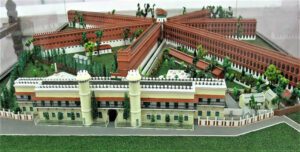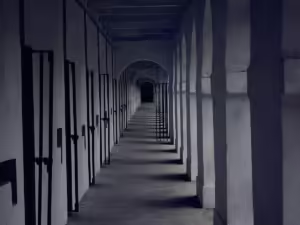Discover the Great Stories at Andaman’s Iconic Cellular Jail
Discover the old Cellular Jail in Andaman and Nicobar Islands: A destination must not miss for every traveler.
Stepping into the pages of history, while visiting the famous Cellular Jail in Port Blair, Andaman, an unforgettable journey through India’s freedom struggle and colonial past.
Would you love to go on a vacation with history, beauty, and adventure? This is the Andaman and Nicobar Islands. The region is mainly known for pristine beaches and natural wonders. In addition to that, there’s one landmark that holds a large amount of historical importance: the Cellular Jail in Port Blair-the infamous British colonial prison, also colloquially called Kala Pani. The jail is a ‘must see’ for anyone traveling to the islands for the experience into the dark chapter of India’s fight for independence.
The Cellular Jail is a must-visit place, but it sends you into a time capsule from the 19th and 20th centuries to the very site where Indian freedom fighters were imprisoned in the most brutal conditions. It’s a story of oppression, resilience, bravery, and the unquenchable fire of India’s revolutionaries.

Why Visit the Cellular Jail?
The Cellular Jail is not merely a tourist attraction; it is a reminder of the sacrifices made by Indian freedom fighters like Veer Savarkar and Batukeshwar Dutt. Between 1896-1906, the jail was constructed especially for holding prisoners in solitary confinement. Seven wings ‘speak’ out of a central watchtower. This structure stands as a symbol for the British to imprison their independence movement; what it mainly did was strengthen unity and resistance against it.
Whether history is an interest of yours or you appreciate the cultural monuments of a nation, someone who enjoys learning, this prison visit offers a highly educational experience. As you walk through the narrow corridors, you can almost feel the echoes of the past as you are transported back in time to when thousands of freedom fighters languished here in isolation, dreaming of independent India.
Top Attractions Inside Cellular Jail
- The Light and Sound Show
The most populous activity about the Cellular Jail is the Light and Sound Show, which tells the story of India’s freedom movement. The show takes place every evening and creates appeals with striking visual and audio effects about the horrors of colonial rule and the sacrifices by freedom fighters. Available in both Hindi and English, it is a very good end to your visit to the prison, leaving you more patriotic in today’s world. - Freedom Fighters’ Gallery and Museum
The Cellular Jail has a museum that showers light upon many the artifacts, documents, and personal belongings of well-known revolutionaries. You get to read letters written by the prisoners inside jail itself, historical photographs, and firsthand accounts of how life had been in jail for them. Here, you come to know about the significant historical figures who had spent years of solitary confinement in this jail-like Vinayak Damodar Savarkar. - Martyrs’ Memorial
The Martyrs’ Memorial stands within the premises of the prison, a somber and tear-jerking homage to the freedom fighters of India, who were willing to pay the ultimate price for the freedom of India. This section of the prison makes you introspect since you pay your respects to those people who, at the hands of the colonial rulers, had to tolerate extreme torture and conditions that could hardly sustain human life. - Roof Top Panoramas
Next, visit the rooftop, where you can really enjoy the panoramic view of the sea that surrounds Port Blair city. It’s quite different, from the somber history of jail life to be witnessed versus the serenity of Andaman Islands-that one lives to cherish.
A Great Destination for Every Type of Traveler
The Cellular Jail is of interest to very vast sections of visitors—history enthusiasts, families, solo travelers, and even honeymooners looking for that different hue to a beach holiday. For families, it is an excellent learning experience for children concerning India’s great history and the struggle for independence. For single travelers, the experience will be both highly emotional and worthwhile; couples will also be able to mix this cultural outing with island attractions on beaches.
Best Time to Visit Cellular Jail
The best time to visit the Cellular Jail is between October and March since the weather prevailing in the Andaman Islands will be cool and pleasant. The Light and Sound Show takes place twice in the evening—one in Hindi and the other in English—so make sure you plan your visit accordingly. One could spend about 2-3 hours touring the jail, followed by the show.
How to Reach Cellular Jail
This prison is accessible as it is located in Port Blair, the capital of the Andaman and Nicobar Islands. You may combine this heritage site with your tour along with very famous places like Ross Island, Havelock Island, and Corbyn’s Cove Beach. Because flights are readily available from major Indian cities like Delhi, Kolkata, and Chennai to Port Blair.

Travel Tips
The prison is a long distance so it is advisable to wear comfortable walking shoes.
You should check in advance about the timings of the light and sound show so you don’t miss that.
At some places photography is restricted. But, generally, photography is permitted. You can take as many snaps and selfies as you can for that memorable time of your lifetime.
If you are planning to visit during peak tourist seasons, advance booking of tickets for the show and guided tours would be recommended to avoid long queues.
More than a monument of the Indian freedom struggle, the Cellular Jail of Andaman and Nicobar Islands has historical value as a powerful reminder to Indians of their fight for independence. Its walls, galleries, and memorials unfold vivid struggles and sacrifices by Indian revolutionaries. At first sight, this iconic landmark will emerge as an unmissable destination for any traveler in search of history, culture, and sheer grandeur. Add it to your itinerary for Andaman, and prepare for the experience that will linger long after you’re gone.
